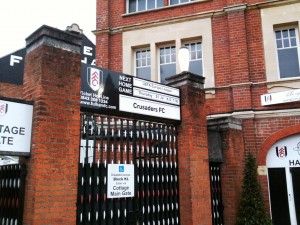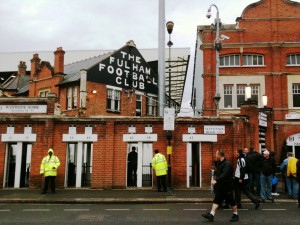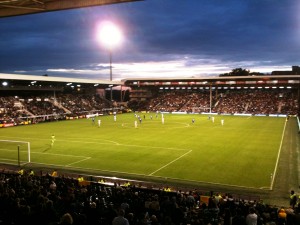Book Review: Aguero Goal King: Official Manchester City FC Celebration Book by Manchester City
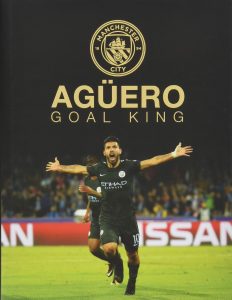 On 12 January 2020, Man City’s 6-0 win over Aston Villa may have seemed like just another day at the office for Sergio Aguero, but it marked an historic moment in the history-maker’s already dazzling career. Aguero’s second goal of the afternoon saw the Argentinian hero reach 176 Premier League goals – a feat that took him above Thierry Henry in the Premier League’s all-time scoring records to become the most prolific international striker in the League’s history and the fourth all-time leading scorer, with only Andy Cole, Wayne Rooney and Alan Shearer with better figures, though Andy Cole with just seven more goals than Aguero is clearly in the sharpshooter’s sight. A further goal piled on Villa’s woes but, more importantly for the Premier League history books, handed Aguero his twelfth league hat-trick and cemented a second momentous record in a record-breaking afternoon, overtaking Alan Shearer for the most league hat-tricks. Aguero’s goals per game record and efficiency are similarly second to none, and already this season he’s bypassed 250 total goals for Man City in all competitions, with, at the time of writing, 16 league goals to his name, and 24 in sum.
On 12 January 2020, Man City’s 6-0 win over Aston Villa may have seemed like just another day at the office for Sergio Aguero, but it marked an historic moment in the history-maker’s already dazzling career. Aguero’s second goal of the afternoon saw the Argentinian hero reach 176 Premier League goals – a feat that took him above Thierry Henry in the Premier League’s all-time scoring records to become the most prolific international striker in the League’s history and the fourth all-time leading scorer, with only Andy Cole, Wayne Rooney and Alan Shearer with better figures, though Andy Cole with just seven more goals than Aguero is clearly in the sharpshooter’s sight. A further goal piled on Villa’s woes but, more importantly for the Premier League history books, handed Aguero his twelfth league hat-trick and cemented a second momentous record in a record-breaking afternoon, overtaking Alan Shearer for the most league hat-tricks. Aguero’s goals per game record and efficiency are similarly second to none, and already this season he’s bypassed 250 total goals for Man City in all competitions, with, at the time of writing, 16 league goals to his name, and 24 in sum.
Aguero’s arrival at the Etihad in 2011 from Atletico Madrid coincided with Manchester City’s change in fortunes. Just twelve years ago they’d been struggling in the third tier of English football, but today they are one of the biggest names in the global game, and the enigmatic Argentinian has been at the forefront of this success. Indeed, whilst other strikers have come and gone at the Etihad, including Jo and Roque Santa-Cruz, Aguero has led the line for nine seasons. Though, in truth, he has not just led the line, he has dominated, taking The Citizens to a fourth league title and record 100 points haul last season and the cusp of European greatness. However, recent developments leave City’s future hanging in the balance and despite continuing to find the back of the net with enviable regularity, at the age of 31, Aguero’s reign in English football will not last forever. Whilst this will be a blessing for opposition fans, in truth, the Premier League without Aguero will be devoid of one of its all-time stars and for the blue half of Manchester it will mean saying farewell to a club record-breaker. For in 2017, Aguero’s unparalleled feats saw him break the club’s goalscoring record, which had stood for 78 years and was held by Eric Brook.
For fans wanting to reminisce and relive Aguero’s rise to the top of English football, the aptly titled Aguero Goal King underpins this modest striker’s achievements. Published after his record-breaking moment in 2017, the book takes readers through each of Aguero’s 178 goals, from his first against Swansea on 15 August 2011, to his 178th against Napoli on 1 November 2017. Split into seasons, each goal is marked by a brief description and an accompanying photo image.
The book kicks off with an introduction from the man himself, in which he acknowledges his own footballing role models, thanks his team-mates and expresses his desire to win the Champions League with City – a desire which, depending on the outcome of the current UEFA ban, may rest squarely on the current campaign if he is to fulfil his dream. Sadly, that is really as far as it goes with Aguero’s contribution, aside from brief pull-out quotes at the start of each season’s section. To my mind, it would have enhanced the book in having some additional quotes, even if only in the form of previous post-match comments from Aguero, dotted throughout, particularly charting important goals or moments.
Instead of Aguero’s first-hand commentary, the goals are described with standard journalistic vision. The descriptions are largely run-of-the-mill, after it all it’s fairly difficult to capture a goal in prose, but they all provide the basic information. This isn’t a gushing commentary or sycophantic hero-worship, but generally an objective account of each goal with some much-deserved praise thrown in where it’s due. Each goal is given the minute in which it was scored, the date and the opposition, as well as a trophy to indicate the competition, and although the summary explains how each was scored and score-lines in the match, a note of this information outside of the main text would have been nice to easily identify these matters. Similarly, pull-out facts about the goals would also have been a welcome addition. However, there is a very clear sense of a sleek and minimalist design to the book, and the emphasis is much more on imagery and iconography than text, which is understandable.
Supporting images, therefore, get pride of place in the book and readers can see Aguero grow up in front of their eyes across the pages from a fresh-faced Premier League unknown to one of English football’s most-feared marksmen. The imagery itself is a mixture of Aguero’s celebrations, action shots and goal snapshots, but in a sense, these too fail to really give the story of each goal. Indeed, single images cannot always capture the moment in full, and I did feel that montages of time-lapse imagery would have been beneficial at least for some of the goals. Indeed, each goal is given fairly similar treatment. Aside from double-page spreads for some of the more significant moments, sadly there is nothing that really gives those more important goals greater recognition or further exploration. Of course, all goals are important, but to paraphrase George Orwell, some goals are more important than others. Few would argue that amongst Aguero’s most important goals was the final one and thirtieth of his opening campaign with Manchester City against QPR on the last day of the season to clinch the club’s first title in 44 years and snatch the Premier League trophy away from rivals Manchester United, but this goal is not really given much more focus than any of the others. In my opinion, it would have been better for some goals, including those which had greater significance, to have had more pictures and information dedicated to them.
At the back of the book, there is a nice, if condensed, tribute to Eric Brook, but a few images of his goals would have been a welcome addition, although, admittedly, for a striker whose City career ran from 1928 to 1939, such images may have been hard to come by! The book concludes with a double-page spread of Aguero’s statistics, with breakdowns of those who assisted his 178 goals, how they were scored, and an interesting graph from 1 to 90 to show in which minute they were scored. Looking at the bar chart, the only hope for any opposition is that Aguero makes a three-minute cameo in the 55-57th minute or a two-minute cameo in either the 11-12th minute or 38-39th minute – the only times in a match during his 178-goal spree that he didn’t score. However, fans beware of the 69th or 90th minute when Aguero bagged seven goals apiece. Although, in truth, at his glorious best, Aguero possesses the ability to score at any time, by any means.
One stat that is missing from these pages is his breakdown of goals per opposition, which I suspect some teams may be thankful for – aside from Bolton, who, at the time of writing, of all Premier League opponents he has faced, are the only side he hasn’t scored against. What is all the fuss about Sergio Aguero, they may wonder. Whilst it wouldn’t perhaps be the easiest of reading for opposition fans, it would have been useful and interesting to have this breakdown. Similarly, there is no breakdown of goal hauls, i.e. the number of single goals, braces, hat-tricks, and (sorry, Newcastle fans) five-goal hauls Aguero scored. Other things that I felt were missing and which would have added value to this book, in my opinion, were quotes from teammates and managers and possibly team line-ups. The emphasis, though, is very much on a sleek, concise style and that is certainly achieved throughout, whilst successfully documenting Aguero’s feats.
Overall, this is a great premise for a book, although, arguably, the publishers went a little early with it, given that Aguero is still banging in the goals and has the three players above him in the all-time-goalscoring standings in his sight – though Rooney and Shearer may be out of reach even for the Argentinian striking sensation. But this is specifically a celebration of his achievements in England, so it’s a nice touch to acknowledge that particular history, though I suspect a further edition may be warranted when Aguero does finally call time on his stay at the Etihad. In terms of this book, whilst I really appreciated the sentiment and ethos of it, I did feel that a few additions could have really made this a standout offering. As it is, it’s a commendable tribute to the prolific marksman but perhaps not quite as spectacular as the player deserves. There is certainly inspiration to be taken from this book, however, and I could see it working in a similar format for other players and teams as well (although I suspect neither the aforementioned Jo or Roque Santa-Cruz will be getting their own City chronicles any time soon). But for now, the title of Goal King has already been claimed by the record-breaking South American and, whatever the future holds for Aguero at the Club, that can never be taken away.
Jade Craddock
(Trinity Mirror Sport Media, December 2017, 240pp)
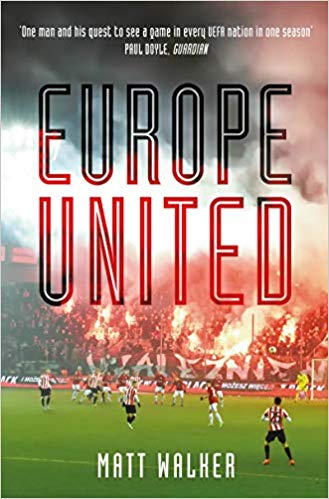
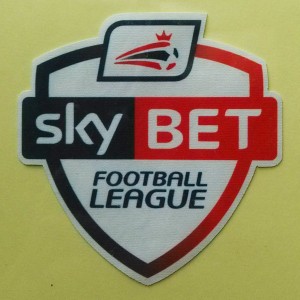 Beware the Ides of March – no I’ve no idea what it means either, but I do know that this is the time when supporters realise the remaining fixtures will end in single figures; pro option hopes are forlorn and relegation fears realised.
Beware the Ides of March – no I’ve no idea what it means either, but I do know that this is the time when supporters realise the remaining fixtures will end in single figures; pro option hopes are forlorn and relegation fears realised.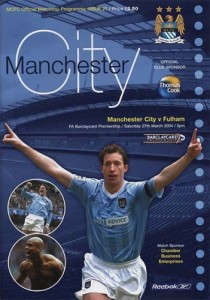 It’s almost ten years to the day since I last watched Fulham at Manchester City. Back then, on 27 March 2004, it was a very different scenario to the one today. With eight games to play, Fulham still harboured ambitions of a getting into one of the European spots, while City were only 4 points off the relegation zone. How times have changed. However for all that was riding on the game, the Fulham website summarised the subsequent 0 – 0 draw as, “a game sparse of quality”. At the end of that 2003/04 season City finished 16th in the Premier League with 41 points, whilst Fulham ended seven places higher and with 11 more points. The teams that day were:
It’s almost ten years to the day since I last watched Fulham at Manchester City. Back then, on 27 March 2004, it was a very different scenario to the one today. With eight games to play, Fulham still harboured ambitions of a getting into one of the European spots, while City were only 4 points off the relegation zone. How times have changed. However for all that was riding on the game, the Fulham website summarised the subsequent 0 – 0 draw as, “a game sparse of quality”. At the end of that 2003/04 season City finished 16th in the Premier League with 41 points, whilst Fulham ended seven places higher and with 11 more points. The teams that day were: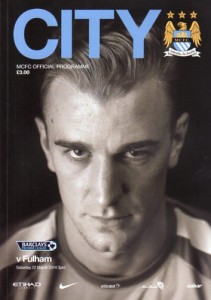 However, when you are struggling, nothing goes your way and so it proved today. As expected City dominated the opening period of the first-half, but Fulham coped fairly comfortably. Then on twenty six minutes a long ball by James Milner saw Negredo get beyond the Fulham centre-back Amorebieta. As the defender stretched to reach the ball, there was contact with the City forward, who theatrically went down. After consulting with his assistant, referee Moss pointed to the spot and booked Amorebieta. Yaya Toure converted leaving Fulham feeling that the ‘big’ club tag of City had earned them a most dubious penalty. That was enough to give City the lead at the break, but how different would the game have been had it remained at 0 – 0? Would City have got frustrated and could Fulham have nicked a goal on the break? We’ll never know.
However, when you are struggling, nothing goes your way and so it proved today. As expected City dominated the opening period of the first-half, but Fulham coped fairly comfortably. Then on twenty six minutes a long ball by James Milner saw Negredo get beyond the Fulham centre-back Amorebieta. As the defender stretched to reach the ball, there was contact with the City forward, who theatrically went down. After consulting with his assistant, referee Moss pointed to the spot and booked Amorebieta. Yaya Toure converted leaving Fulham feeling that the ‘big’ club tag of City had earned them a most dubious penalty. That was enough to give City the lead at the break, but how different would the game have been had it remained at 0 – 0? Would City have got frustrated and could Fulham have nicked a goal on the break? We’ll never know.



 “My name’s James Scoltock, I’m a football fan and so very happily one dimensional” declares the author in his review of a dramatic 12 months for his club, Norwich City.
“My name’s James Scoltock, I’m a football fan and so very happily one dimensional” declares the author in his review of a dramatic 12 months for his club, Norwich City.